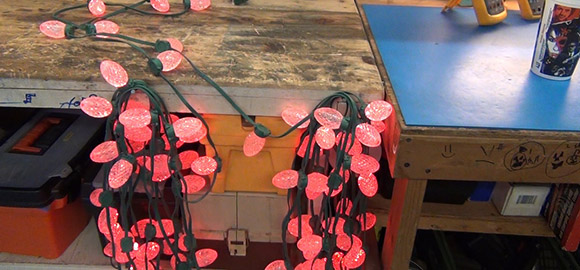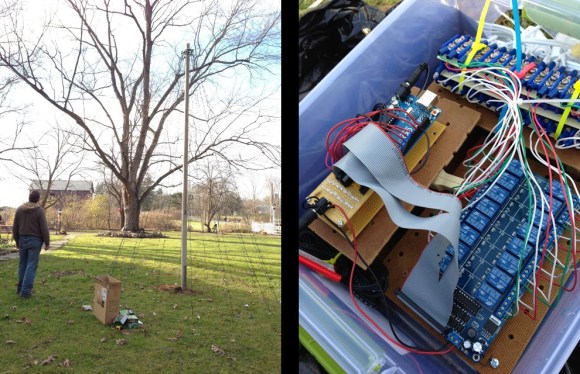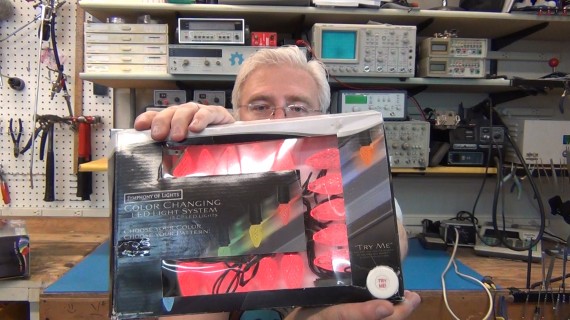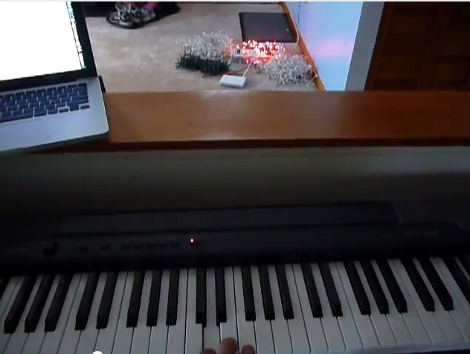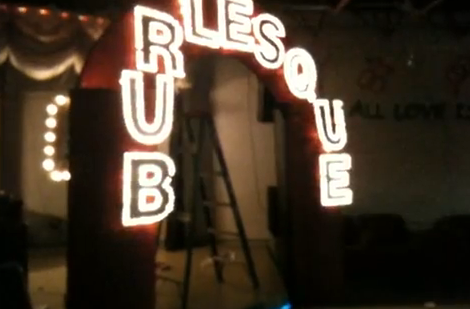
With the help of a microcontroller, a few strings of GE Color Effect Christmas lights can be easily turned into a fully programmable LED strip, or if you are so inclined, a huge RGB LED display. [Hubbe] had a few strings of these Color Effect Christmas lights, but didn’t want to spend the time arranging his light strings in an array simply to get a programmable display. His solution to this problem – the Chaos Display – turns strings of Christmas lights randomly thrown on a tree into a fully programmable display capable of displaying text and images.
[Hubbe] was inspired by QC Co-Lab’s light wall powered by GE Color Effect lights. Having a huge RGB LED display is very cool, but requires building a frame for each of the Christmas light pixels. [Hubbe] had a different idea – just throw the lights on a tree and use a web cam to figure out where each Christmas light is on the display.
The actual build consists of six strings of Color Effect lights. After throwing them on the tree, [Hubbe] set his phone on a tripod to record an image for each individual light. With some computing power, he was able to create a virtual display made of tangled strings of Christmas lights.
You can see a video of [Hubbe]’s work after the break.
Continue reading “Displaying Text On Random Strings Of Christmas Lights”

